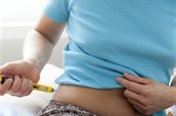
Diabetes can be diagnosed quite simply by measuring the levels of glucose in the blood. The following tests are used in screening for and monitoring diabetes:
Finger-prick test
This is the most common and easiest test of them all, and can be done at a pharmacy, clinic or at your doctor’s rooms.
A sample of blood can be taken at any time and you’ll be able to get the result immediately.
A level of 11.1mmol/L or more glucose in the blood sample (or higher) indicates that you have diabetes. A fasting blood glucose test may be done to confirm the diagnosis. With a fasting test, your doctor measures your blood-glucose levels after you’ve fasted for eight hours.
To test your blood-glucose levels, your doctor or nurse will prick your finger with a lancet and add a small drop of blood onto the testing strip of a glucose meter. The meter reads the strip and displays a number – your blood-glucose level.
Oral glucose tolerance test (OGTT)
This test is usually done at a pathology lab. Blood-glucose levels are measured before and two hours after you’ve had a sugary drink that contains 75g of glucose. The result shows you how your body responds to the intake of sugar and if sufficient insulin is produced.
A level of 11.1 mmol/L glucose in your blood (or higher) indicates that you have diabetes.
The glycated haemoglobin (HbA1c) test
HbA1c refers to “glycated haemoglobin”. When haemoglobin, a protein in your red blood cells, combines with the glucose in your blood, it becomes “glycated” – a sign of diabetes.
This test gives you an overall picture of what your average blood-glucose levels have been over the past three months. The result is indicated as a percentage that relates to how much glucose is attached to your red blood cells. When this percentage is equal to or higher than 6.5%, you have diabetes.
Diagnostic criteria
If you have symptoms of diabetes (e.g. frequent urination, excessive thirst, weight loss, blurred vision, fatigue), the following results can confirm the diagnosis:
- Random blood glucose: ≥11.1 mmol/L
- Fasting blood glucose: ≥7.0 mmol/L
- HbA1c: ≥6.5%
- Oral glucose tolerance test (testing your glucose levels two hours after drinking a sugary drink): ≥11.1 mmol/L
Gestational diabetes
Similar glucose levels are used in diagnosing gestational diabetes.
Information supplied by Jeannie Berg, diabetes educator and Chairperson of the Diabetes Education Society of South Africa (DESSA), and reviewed by Dr Joel Dave (MBChB PhD FCP Cert Endocrinology), Senior Specialist in the Division of Diabetic Medicine and Endocrinology, University of Cape Town. August 2018.
Read more:




 Publications
Publications
 Partners
Partners












